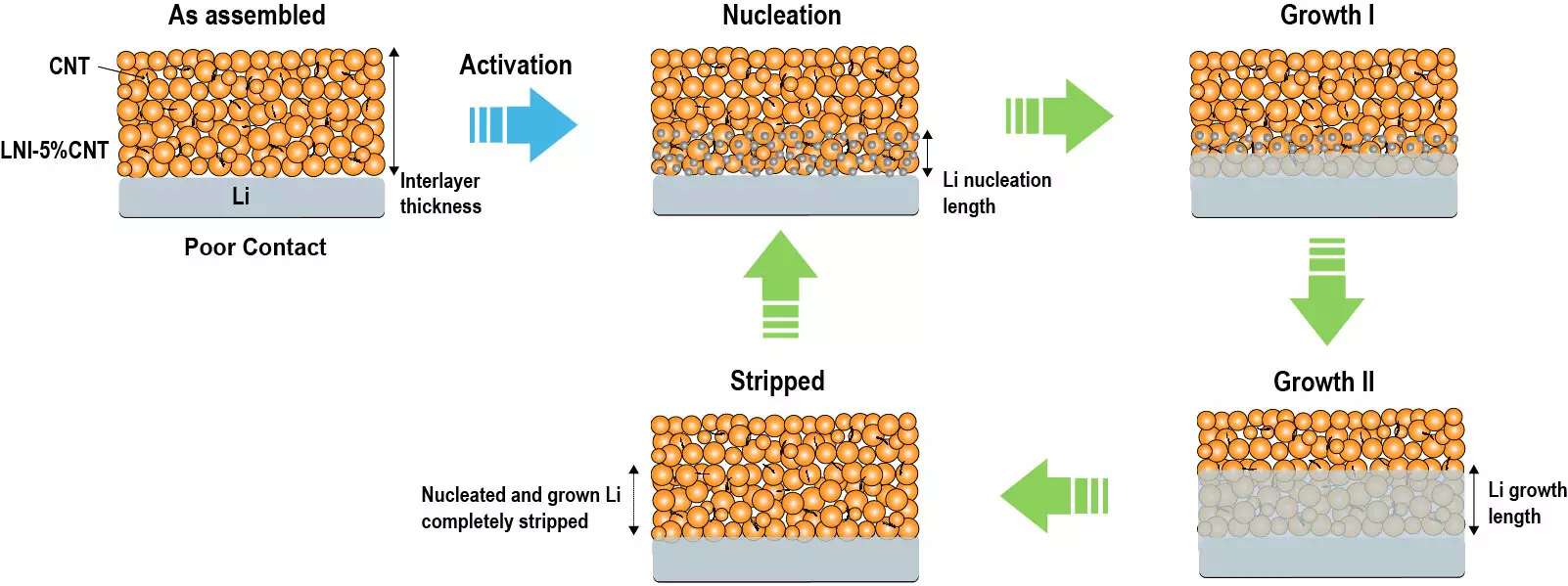Engineers and chemists have been tirelessly working on advancing battery technologies to meet the increasing demands of the electronics industry. In recent years, all-solid-state batteries (ASSBs) have emerged as a potential solution. ASSBs are battery cells that utilize a solid electrolyte between two electrodes. Among these, all-solid-state lithium-metal batteries (ASSLBs) have shown great promise, boasting high energy densities and improved safety compared to conventional lithium-ion batteries (LiBs). However, their deployment on a large scale has been hindered due to challenges such as the growth of Li dendrites and high interface resistance.
Researchers at the University of Maryland have introduced a groundbreaking design principle that addresses the limitations of ASSLBs. This principle, outlined in a paper published in Nature Energy, aims to guide the fabrication of interlayers that can successfully mitigate Li-dendrite growth. Unlike previous approaches that relied on trial and error, this principle provides a systematic framework for developing a series of interlayers to fully resolve the issues associated with Li dendrites in all-solid-state batteries.
According to the research team, the key to suppressing Li dendrites lies in the properties of the interlayer situated between the lithium anode and solid electrolyte. The interlayer should possess several key properties, including being lithiophobic (repelled by lithium metal), highly ionic conductive, slightly electronic conductive, and porous. These characteristics contribute to greater battery stability and improved performance.
To validate their design principle, the researchers created a [email protected]/Li6PS5Cl/20 µm-Li battery cell with an area capacity of 2.2 mAh cm-2. During initial testing, these battery cells exhibited exceptional performance, retaining 82.4% of their capacity after undergoing 350 operation cycles at 60° C at a rate of 0.5 C. This success highlights the potential of the design principle for developing safe and reliable batteries.
What sets this design principle apart is its potential applicability to a wide range of ASSBs. By suppressing Li-dendrite formation, this principle could pave the way for the development of numerous safe and highly performing battery technologies containing solid electrolytes. These advancements could power electric vehicles and other large electronic systems, driving the progress towards a more sustainable future.
The team of researchers plans to continue their investigations by testing additional interfaces to further modify and validate the design principle. They also aim to optimize the materials used in the interlayer based on the design principles. Through ongoing research and development, the ultimate goal is to overcome the challenges currently faced by all-solid-state batteries and enable their widespread adoption.
The research conducted at the University of Maryland has brought forth an innovative design principle that addresses the limitations associated with all-solid-state batteries. By focusing on the properties of the interlayer, the researchers have demonstrated the immense potential for developing safe and powerful battery technologies. This breakthrough could shape the future of energy storage and contribute significantly to the development of sustainable electronic systems.



Leave a Reply